Battles Of Lexington And Concord
 From Nwe
From Nwe | Battles of Lexington and Concord | |||||||
|---|---|---|---|---|---|---|---|
| Part of the American Revolutionary War | |||||||
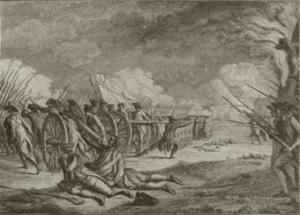 19th century depiction of Battle of Lexington; contains inaccuracies |
|||||||
|
|||||||
| Combatants | |||||||
| Militia of the Province of Massachusetts Bay, (Minutemen) |
British Army, British Marines, Royal Artillery |
||||||
| Commanders | |||||||
| John Parker, James Barrett, John Buttrick, William Heath, Joseph Warren |
Francis Smith, John Pitcairn, Walter Laurie, Hugh, Earl Percy |
||||||
| Strength | |||||||
| 75 at Lexington Common (Parker). 400 at Concord North Bridge (Barrett). 4,000 by the end of the day (Heath, Warren, Pickering, others). All are estimates. | 700 in the initial expedition (Smith): of that force, 250 at Lexington Green (Pitcairn), 96 at Concord Bridge (Laurie) 120 at Barrett's Farm (Parsons). Additional 1,000 reinforcement for the return to Boston (Percy). All numbers are estimates. | ||||||
| Casualties | |||||||
| 50 killed, 5 missing, 39 wounded |
73 killed, 26 missing, 174 wounded |
||||||
The Battles of Lexington and Concord were the first military engagements of the American Revolutionary War. They were fought on April 19, 1775, in Middlesex County, Province of Massachusetts Bay, within the towns of Lexington, Concord, Lincoln, Menotomy (present-day Arlington), and Cambridge, near Boston. The battles marked the outbreak of open armed conflict between the Kingdom of Great Britain and its thirteen colonies in the mainland of British North America.
About 700 British Army regulars, under Lieutenant Colonel Francis Smith, were ordered to capture and destroy military supplies that were reportedly stored by the Massachusetts militia at Concord. The Patriot colonists had received intelligence weeks before the expedition which warned of an impending British search, and had moved much, but not all, of the supplies to safety. They had also received details about British plans on the night before the battle, and information was rapidly supplied to the militia.
The first shots were fired just as the sun was rising at Lexington. The militia were outnumbered and fell back. Other British colonists, hours later at the North Bridge in Concord, fought and defeated three companies of the king's troops. The outnumbered soldiers of the British Army fell back from the Minutemen after a pitched battle in open territory.
More Minutemen arrived soon thereafter and inflicted heavy damage on the British regulars as they marched back towards Boston. Upon returning to Lexington, Smith's expedition was rescued by reinforcements under Hugh, Earl Percy. A combined force of fewer than 1,700 men marched back to Boston under heavy fire in a tactical withdrawal and eventually reached the safety of Charlestown.
The British failed to maintain the secrecy and speed required to conduct a successful strike into hostile territory, yet they did destroy some weapons and supplies. Most British regulars returned to Boston. The occupation of surrounding areas by the Massachusetts Militia that evening marked the beginning of the Siege of Boston.
| Boston campaign, 1774–1776 |
|---|
| Powder Alarm – Lexington and Concord – Boston siege – Chelsea Creek – Bunker Hill – Dorchester Heights |
The battles, particularly the skirmish at the North Bridge, are known as the "shot heard 'round the world," described in Ralph Waldo Emerson's Concord Hymn.
Background
On the morning of April 16, Gage ordered a mounted patrol of about 50 men under the command of Major Mitchell of the 5th Regiment into the surrounding country to intercept messengers who might be out on horseback. This patrol behaved differently from patrols sent out from Boston in the past, staying out after dark and asking travelers about the location of Sam Adams and John Hancock. This had the unintended effect of alarming many residents and increasing their preparedness. The Lexington Militia in particular began to muster early that evening, hours before receiving any word from Boston. According to one anecdote, a farmer mistook this British patrol for his countrymen after nightfall and asked them, "Have you heard anything about when the regulars are coming out?" He was slashed on his scalp with a sword.
Lieutenant Colonel Francis Smith received orders from Gage on the afternoon of April 18 with instructions that he was not to read them until his troops were underway. They were to proceed from Boston "with utmost expedition and secrecy to Concord, where you will seize and destroy… all Military stores… But you will take care that the soldiers do not plunder the inhabitants or hurt private property." Gage apparently used his discretion and did not issue written orders for the arrest of rebel leaders.
Successful Patriot intelligence
The rebellion's ringleaders—with the exception of Paul Revere and Joseph Warren—had all left Boston by April 8. They had received word of Dartmouth's secret instructions to General Gage from sources in London long before they had reached Gage himself. Samuel Adams and John Hancock had fled Boston to the Hancock-Clarke House, home of one of Hancock's relatives in Lexington where they thought they would be safe.
The Massachusetts Militia had indeed been gathering a stock of weapons, powder, and supplies at Concord, as well as an even greater amount much further west in Worcester, but word reached the Patriots that British officers had been observed examining the roads to Concord. On April 8, they instructed people of the town to remove the stores and distribute them among other towns nearby.
The Patriots were also aware of the upcoming mission on April 19, despite it having been hidden from all the British rank and file and even from all the officers on the mission. There is reasonable speculation, although not proven, that the confidential source of this intelligence was Margaret Gage, General Gage's New Jersey-born wife, who had sympathies with the American cause and a friendly relationship with Warren.
Between 9:00 and 10:00 p.m on the night of April 18, 1775, Joseph Warren told William Dawes and Paul Revere that the King's troops were about to embark in boats from Boston bound for Cambridge and the road to Lexington and Concord. Warren's intelligence suggested that the most likely objectives of the British Army's movements later that night would be the capture of Samuel Adams and John Hancock. They worried less about the possibility of regulars marching to Concord. The supplies at Concord were safe, after all, but they thought their leaders in Lexington were unaware of the potential danger that night. Revere and Dawes were sent out to warn them and alert Patriots in nearby towns.
Militia warned
Dawes covered the southern land route by horseback across the Boston Neck and over the Great Bridge to Lexington. Revere first gave instructions to send a signal to Charlestown and then he traveled the northern water route. He crossed the Charles River by rowboat, slipping past the British warship HMS Somerset at anchor. Crossings were banned at that hour, but Revere safely landed in Charlestown and rode to Lexington, avoiding the British patrol and later warning almost every house along the route. The warned men and the Charlestown Patriots dispatched additional riders to the north.
After they arrived in Lexington, Revere, Dawes, Hancock, and Adams discussed the situation with the militia assembling there. They believed that the forces leaving the city were too large for the sole task of arresting two men and that Concord was the main target. The Lexington men dispatched riders in all directions (except south to Waltham for unknown reasons), and Revere and Dawes continued along the road to Concord. They met Samuel Prescott at about 1:00 a.m. In Lincoln, these three ran into a British patrol led by Major Mitchell of the 5th Regiment and only Prescott managed to warn Concord. Additional riders were sent out from Concord.
Revere and Dawes, as well as many other alarm riders, triggered a flexible system of "alarm and muster" that had been carefully developed months before, in reaction to the British colonists' impotent response to the Powder Alarm. "Alarm and muster" was an improved version of an old network of widespread notification and fast deployment of local militia forces in times of emergency. The colonists had periodically used this system all the way back to the early years of Indian wars in the colony, before it fell into disuse in the French & Indian War. In addition to other express riders delivering their message, bells, drums, alarm guns, bonfires and a trumpet were used for rapid communication from town to town, notifying the rebels in dozens of eastern Massachusetts villages that they should muster their militias because the regulars in numbers greater than 500 were leaving Boston. These early warnings played a crucial role in assembling a sufficient number of British colonial militia to inflict heavy damage on the British regular army later in the day. Samuel Adams and John Hancock were eventually moved to safety, first to what is now Burlington and later to Billerica.
British Army and Marines move out
Around dusk, General Gage called a meeting of all of the senior officers of his army at the Province House. He informed them that orders from Lord Dartmouth had arrived, ordering him to take action against the colonials. He also told them that the senior colonel of his regiments, Lieutenant Colonel Smith, would command, with Major John Pitcairn as his executive officer. The meeting adjourned around 8:30 p.m. After the meeting, Percy mingled with town folk on Boston Common. According to one account, the discussion among persons there turned to the unusual movement of the British soldiers in the town. When Percy questioned one man further, the man replied, "Well, the regulars will miss their aim," "What aim?" asked Percy, "Why, the cannon at Concord" was the reply. Upon hearing this, Percy quickly returned to Province House and relayed this information to General Gage. Stunned, Gage issued orders to have the entire 1st Brigade under arms, and ready to march at 4 a.m.
The British regulars, around 700 strong, were led by Lieutenant Colonel Francis Smith. They were drawn from 11 of Gage's 13 occupying infantry regiments. For this expedition, Major John Pitcairn commanded 10 elite light infantry companies, and Lieutenant Colonel Benjamin Bernard commanded 11 grenadier companies.
Of the companies, Smith had about 350 men from the grenadier companies (specialist assault troops) drawn from the 4th (King's Own), 5th, 10th, 18th (Royal Irish), 23rd, 38th, 43rd, 47th, 52nd, 59th Regiments of Foot (infantry regiments); and the 1st Battalion, Marines (They would not be called "Royal Marines " until 1802).
Protecting them were the light companies (fast moving flankers, skirmishers and reconnaissance troops), around 320 men, from the 4th (King's Own), 5th, 10th, 23rd, 38th, 43rd, 47th, 52nd, 59th Regiments of Foot, and the 1st Battalion, Marines. The companies did each have their own lieutenant, but the majority of the captains commanding them were volunteers attached to them at the last minute, from all the regiments stationed in Boston.
The British began to awaken their troops at 9 p.m. on the night of April 18 and assembled them on the water's edge on the western end of Boston common by 10 p.m. The British march to and from Concord was a terribly disorganized experience from start to finish. The boats used were naval barges that were packed so tightly that there was no room to sit down. When they disembarked at Phipps Farm in present day Cambridge, it was into waist-deep water at midnight. After a lengthy halt to unload their gear, the approximately 700 regulars began their 17 mile (27 km) march to Concord at about 2 a.m. During the wait they were provided with extra ammunition, cold salt pork, and hard sea biscuits. They did not carry knapsacks, since they would not be encamped. They carried their haversacks (food bags), canteens, muskets, and accoutrements, and found themselves in wet, muddy shoes and soggy uniforms. As they marched through Menotomy (modern Arlington), sounds of the colonial alarms throughout the countryside caused the few officers who were aware of their mission to realize that they had lost the element of surprise.
We got all over the bay and landed on the opposite shore betwixt twelve and one o'clock and was on our March by one, which was at first through some swamps and slips of the Sea till we got into the Road leading to Lexington soon after which the Country people begun to fire their alarm guns light their Beacons, to raise the Country…. To the best of my recollection about 4 o'clock in the morning being the 19th of April the 5 front Compys. was ordered to Load which we did.
About 3 a.m., Colonel Smith sent Major Pitcairn ahead with the latter's ten companies of light infantry and ordered him to quick march to Concord. At about 4 a.m., he made the wise but belated decision to send word back to Boston asking for reinforcements.
Battles
Lexington
As the British Army's advance guard under Pitcairn entered Lexington at sunrise on April 19, 1775, 77 Lexington militiamen, led by Captain John Parker, emerged from Buckman Tavern and stood in ranks on the village common watching them, and spectators (somewhere between 40 and 100) watched from along the side of the road. Of these militiamen, nine had the surname Harrington, seven Munroe, four Parker, three Tidd, three Locke, and three Reed. (Lexington, incidentally, had no minutemen; the town never voted to establish a minute company.)
Parker was later supposed to have made a statement that is now engraved in stone at the site of the battle: "Stand your ground; don't fire unless fired upon, but if they mean to have a war, let it begin here," but there is no evidence he ever said that. He instead told his men to stand fast, don't molest the King's troops and to let them pass, according to his sworn deposition in 1775, after the fight.
I, John Parker, of lawful Age, and Commander of the Militia in Lexington, do testify and declare, that on the 19th Instant in the Morning, about one of the Clock, being informed that there were a Number of Regular Officers, riding up and down the Road, stopping and insulting People as they passed the Road; and also was informed that a Number of Regular Troops were on their March from Boston in order to take the Province Stores at Concord, ordered our Militia to meet on the Common in said Lexington to consult what to do, and concluded not to be discovered, nor meddle or make with said Regular Troops (if they should approach) unless they should insult or molest us; and, upon their sudden Approach, I immediately ordered our Militia to disperse, and not to fire:—Immediately said Troops made their appearance and rushed furiously, fired upon, and killed eight of our Party without receiving any Provocation therefor from us.
A veteran of Indian wars, now slowly dying of tuberculosis, he knew not to let his men be wasted in such a one-sided affair.
Rather than turn left towards Concord, Marine Lieutenant Jesse Adair, at the head of the advance guard of light infantry companies from the 4th, 5th, and 10th Regiments of Foot, decided on his own to protect the flank of his troops by first turning right and then leading the companies down the common itself in a confused effort to surround and disarm the militia. These men ran towards the Lexington militia loudly crying "Huzzah!" to rouse themselves and to confuse the militia. Major Pitcairn arrived from the rear of the advance force and led his three companies to the left and halted them. The remaining companies lay behind the village meeting house on the road back towards Boston.
First shot
Pitcairn then apparently rode forward, waving his sword, and yelled, "Disperse, you rebels; damn you, throw down your arms and disperse!" Captain Parker told his men instead to disperse and go home, but, because of the confusion, the yelling all around, and due to the raspiness of Parker's tubercular voice, some did not hear him, some left very slowly, and none laid down arms. Both Parker and Pitcairn ordered their men to hold fire, but suddenly a shot was fired from a still unknown source.
At 2 o’clock we began our march by wading through a very long ford up to the middles; after going a few miles we took three or four people who were going off to give intelligence; about five miles on this side of a town called Lexington, which lay in our road, we heard there were some hundreds of people collected together intending to oppose us and stop our going on; at 5 o’clock we arrived there, and saw a number of people, I believe between 200 and 300, formed in a common in the middle of town; we still continued advancing, keeping prepared against an attack through without intending to attack them; but on our coming near them they fired on us two shots, upon which our men without any orders, rushed upon them, fired and put them to flight; several of them were killed, we could not tell how many, because they were behind walls and into the woods. We had a man of the 10th light Infantry wounded, nobody else was hurt. We then formed on the Common, but with some difficulty, the men were so wild they could hear no orders; we waited a considerable time there, and at length proceeded our way to Concord.
from: The British in Boston: Being the Diary of Lieutenant John Barker of the King’s Own Regiment from November 15, 1774, to May 31, 1776. Notes by Elizabeth Ellery Dana. Cambridge, Mass.: Harvard University Press, 1924.
Some witnesses among the regulars reported the first shot was fired by a colonial onlooker from behind a hedge or around the corner of a tavern. Some observers reported a mounted British officer firing first. Both sides generally agreed that the initial shot did not come from the men on the ground immediately facing each other. Speculation arose later in Lexington that a man named Solomon Brown fired the first shot from inside the tavern or from behind a wall. Unsubstantiated allegations also arose that the British were ordered to fire a "warning volley" that startled the Lexington troops into firing. Recent speculation has focused on the possibility of a negligent discharge or of multiple, possibly unrelated "first shots" from both sides.
In truth, nobody knew then, nor knows today, who fired the first shot of the American Revolution.
Witnesses at the scene described several intermittent shots fired from both sides before the lines of regulars began to fire volleys without receiving orders to do so. A few of the militiamen believed at first that the regulars were only firing powder with no ball, but then they realized the truth, and few, if any, in the militia managed to load and return fire. The rest wisely ran for their lives.
We Nathaniel Mulliken, Philip Russell, [and 32 other men], All of lawful age, and inhabitants of Lexington, in the County of Middlesex…do testify and declare, that on the nineteenth in the morning, being informed that…a body of regulars were marching from Boston towards Concord…we were alarmed and having met at the place of our company’s parade, were dismissed by our Captain, John Parker, for the present, with orders to be ready to attend at the beat of the drum. We further testify and declare that about five o’clock in the morning, hearing our drum beat, we proceeded towards the parade, and soon found that a large body of troops were marching towards us, some of our company were coming to the parade, and others had reached it, at which time, the company began to disperse, whilst our backs were turned on the troops, we were fired on by them, and a number of our men were instantly killed and wounded, not a gun was fired by any person in our company on the regulars to our knowledge before they fired on us, and continued firing until we had all made our escape.
Pitcairn's horse was hit in two places. The regulars charged forward with bayonets. Captain Parker witnessed his cousin Jonas run through. Eight Massachusetts men were killed and ten were wounded against only one British soldier of the 10th Foot wounded (his name was Johnson, according to Ensign Jeremy Lister of that regiment, present at this incident). The eight British colonists killed, the first to die in the Revolutionary War, were John Brown, Samuel Hadley, Caleb Harrington, Jonathon Harrington, Robert Munroe, Isaac Muzzey, Asahel Porter, and Jonas Parker. Jonathon Harrington, fatally wounded by a British musket ball, managed to crawl back to his home, and he died upon his doorstep. One wounded man, Prince Estabrook, was a black slave who served in the town's militia.
The light infantry companies under Pitcairn at the common got beyond their officers' control. They were firing in different directions and preparing to enter private homes. Upon hearing the sounds of muskets, Colonel Smith rode forward from the grenadier column. He quickly found a drummer and ordered him to beat assembly. The grenadiers arrived shortly thereafter, and, once they were rounded up, the light infantry were then permitted to fire a victory volley, after which the column was reformed and marched towards Concord.
Concord
The militiamen of Concord, uncertain of what had actually transpired at Lexington, were not sure whether to wait until they could be reinforced by troops from towns nearby, or to stay and defend the town, or to move east and greet the British Army from superior terrain. As the regulars began to approach, they did all of these. The Minutemen watched from a hill as Smith deployed light infantry against them. They began a series of marching retreats into the town. Some had occupied a hill in the town and now argued about what to do next, while others approached with the regulars behind them. The Lincoln militia arrived and joined in the debate. Caution prevailed, and Colonel James Barrett surrendered the town of Concord and led the men across Old North Bridge to a hill about a mile north of town, where they could continue to watch the troop movements of the British.
Regulars follow Gage's orders
Smith's troops divided into multiple forces to fulfill Gage's orders. The 10th Regiment's company of grenadiers secured South Bridge under Captain Mundy Pole, while seven companies of light infantry under Captain Parsons secured the North Bridge near Barrett's force. Captain Parsons took four of these companies (from the 5th, 23rd, 38th and 52nd Regiments of Foot) up the road two miles (3 km) past the bridge to search Barrett's property, two companies (from the 4th and 10th Regiments of Foot) were sent across the bridge to guard their return route, and one company (from the 43rd Regiment of Foot) remained guarding the bridge itself.
Using the detailed information provided by Loyalist spies, the grenadier companies searched the small town for military supplies. When the grenadiers arrived at Wright's Tavern, they found the door barred shut, and the tavern keeper refused entry. According to reports provided by local Tories, Pitcairn knew cannon had been buried on the property. Holding the tavern keeper at gunpoint, he ordered him to show him where the cannon was buried. The grenadiers burned some gun carriages found in the village meetinghouse, and when the fire spread to the meetinghouse itself, the soldiers and residents joined forces in a bucket brigade to save the building. Nearly a hundred barrels of flour and salted food, and 550 pounds of musket balls, were thrown into the millpond. All the spiked cannon were repaired the next day, (those with broken trunnions and hammered muzzles were not, however) and all the shot was also recovered.
Barrett's house had been an arsenal weeks before but few weapons remained now, and these were, according to family legend, quickly buried in furrows to look like a crop had been planted.
The North Bridge
Colonel Barrett's troops, upon seeing smoke rising from the village square and seeing only a few companies directly below them, agreed (after consultation) to march back towards town from their vantage point on Punkatasset Hill to a lower, closer flat hilltop about 300 yards (300 m) from the North Bridge over the Concord River. This land belonged to Major John Buttrick, who led the Minuteman units under Barrett. It was also their muster (training) field. Two British companies from the 4th and 10th held this position, but they marched in retreat down towards the bridge and yielded the hill to Barrett's men.
Five full companies of Minutemen and five of militia from Acton, Concord, Bedford and Lincoln occupied this hill along with groups of other men streaming in, totaling about 500 against the light infantry companies from the 4th, 10th, and 43rd Regiments of Foot under Captain Laurie, a force totaling about 90-95 men. Barrett ordered the Massachusetts men to form one long line two deep on the highway leading down to the bridge, and then he called for another consultation. While overlooking North Bridge from the top of the hill (which would after 1793 have a road built on it called Liberty Street), Barrett and the other Captains discussed possible courses of action. Captain Isaac Davis of Acton, whose troops had arrived late, declared his willingness to defend a town not their own by saying, "I'm not afraid to go, and I haven't a man that's afraid to go."
At this moment, they first saw the smoke from the burning gun carriages and barrels rising over Concord, and many thought the regulars had set the town alight. Barrett ordered the men to load their weapons but not to fire unless fired upon. Then he ordered them to advance. Both British companies used as guards were ordered to retreat back across the North Bridge, and one officer then tried to pull up the loose planks of the bridge to impede the colonial advance. Major Buttrick began to yell at the regulars to stop harming the bridge. The Minutemen and militia advanced in column formation on the light infantry, keeping to the highway only, since the highway was surrounded by the spring floodwaters of the Concord River.
There was no music, no flags on both sides, even though many years later one old man who had been on the colonial side suddenly remembered out of the blue that their fifer played "The White Cockade," a popular Jacobite tune, in opposition to the Hanoverian King George III. This is apocryphal at best, and few of the British troops would have understood the meaning of "The White Cockade" anyway, since the Scottish rebellion had been thirty years before. In truth, neither side ever mentioned any flags or music at the bridge that day in any sworn depositions at the time. British flank companies carried no colors, and the militiamen and minutemen did not mention using them at all.
The inexperienced Captain Walter Laurie of the 43rd Regiment of Foot, in nominal command of this little detachment, then made a poor tactical maneuver. When he found his summons for help to the grenadiers downtown produced no results, he ordered his men to form positions for "street firing" behind the bridge in a column running perpendicular to the river. This formation was appropriate for sending a large volume of fire into a narrow alley between the buildings of a city, but not for an open path behind a bridge. Confusion reigned as regulars retreating over the bridge tried to form up in the street-firing position of the other troops. Lieutenant William Sutherland, who was in the rear of the formation, saw Laurie's mistake and ordered flankers to be sent out. But he was from a company different from the men under his command, and only four soldiers obeyed him. The remainder tried as best they could in the confusion to follow the orders of the superior officer.
The opponents did NOT face each other in stereotypical Hollywood movie fashion, that is, like the two lines of an upper-case letter T with the top horizontal line representing the Patriots and the bottom vertical line representing both the bridge and Laurie's British troops behind it, but rather like a group of clustered, confused men on the British side trying to form a street-firing position behind the bridge, facing the approaching line of colonists who were still stuck marching toward the bridge in a column of men, two abreast, on the causeway that was surrounded by spring floodwaters.
A shot rang out, and this time there is certainty from depositions taken from men on both sides afterward that it came from the British Army's ranks. It was likely a warning shot, fired by a panicked, exhausted British soldier from the 43rd, according to Laurie's letter to his commander after the fight. Two other regulars then fired immediately after that, shots splashing in the river, and then the narrow group up front, possibly thinking the order to fire had been given, fired a ragged volley before Laurie could stop them.
Two of the Acton Minutemen, private Abner Hosmer and Captain Isaac Davis, at the head of the line marching to the bridge, were hit and killed instantly. Four more men were wounded, but the militia only halted when Major Buttrick yelled the order, "Fire, for God's sake, fellow soldiers, fire!," when the lines were separated by the Concord River, the bridge, and only 50 yards (45 m). The few front rows of colonists, bound by the road, and blocked from forming a line of fire, managed to fire over each others' heads and shoulders at the regulars. The musket balls plunged down out of the sky down into the mass of regular troops. Four of the eight British officers and sergeants at the bridge, leading from the front of their troops as officers did in this era, were wounded by the volley of musketry coming from the British colonists. At least three privates (Thomas Smith, Patrick Gray and James Hall, all from the 4th (King's Own) Regiment of Foot's Light Company) were killed or mortally wounded, and ten, including Lieutenant Sutherland, were wounded.
The regulars found themselves trapped in a situation where they were both outnumbered and outmaneuvered. Leaderless, terrified at the superior numbers of the enemy, their spirit broken, never having experienced combat before, they abandoned their wounded, and fled to the safety of the approaching grenadier companies coming from the town center.
After the fight
The colonists were stunned by their success. No one had actually believed each side would shoot and kill each other. Some advanced; many more retreated; and some went home to see to the safety of their homes and families. Colonel Barrett eventually began to recover control and chose to divide his forces. He moved the militia back to the hilltop 300 yards away and sent Major Buttrick with the Minutemen across the bridge to a defensive position on a hill behind a stone wall.
Smith, leader of the British expedition, heard the exchange of fire from his position in the town moments after he had received a request for reinforcements from Laurie. Smith assembled two companies of grenadiers to lead towards the North Bridge himself. As these troops marched, they met the shattered remnants of the three light infantry companies running towards them. Smith was concerned about the four companies which had been at Barrett's. Their route to return safely was now gone. Then he saw the Minutemen in the distance behind their wall, and he halted his two companies and moved forward with only his officers to take a closer look.
In the written words of a Minuteman behind that wall: "If we had fired, I believe we could have killed all most every officer there was in the front, but we had no orders to fire and there wasn't a gun fired." During this tense standoff of about 10 minutes, a mentally ill local man wandered through both sides selling hard cider. Smith returned his grenadiers to the town and hoped for the best for the remaining four companies.
These men, unaware of what had happened, marched back from their fruitless search of Barrett's farm. They passed unharmed by Barrett's militia on the muster field and through the tiny battlefield, saw dead and wounded comrades lying on the bridge, including one who looked to them as if he had been scalped, which angered and shocked the British soldiers. They then passed sullenly over the bridge, unharmed by Buttrick's Minutemen. The regulars all returned to the town by 10:30 a.m. Even after a small skirmish, and with superior forces, the British colonists still did not fire yet unless fired upon, and this time the regulars did nothing to provoke them. The British Army continued to destroy colonial military supplies in the town, ate lunch, reassembled for marching, then left Concord after noon.
Return march
Concord to Lexington
Smith sent flankers to follow a ridge and protect his forces from roughly 1,000 colonials in the field. This ridge ended near Meriam's Corner, a crossroads and a small bridge about a mile (2 km) outside of Concord. To cross the narrow bridge, the army column had to stop, dress its line, and close its rank to a mere three soldiers apiece. As the last of the army column marched over the bridge, colonial militiamen from Billerica and Chelmsford fired, the regulars turned and fired a volley, and the colonists returned fire. Two regulars were killed and perhaps six wounded with no colonial casualties. Smith sent out his flanking troops again after crossing the small bridge.
Nearly 500 militiamen assembled in the woods on Brooks Hill about a mile (2 km) past Meriam's Corner. Smith's leading forces charged up the hill to drive them off, but the colonials did not withdraw. Meanwhile the bulk of Smith's force proceeded along the road to Brooks Tavern where they engaged a single militia company from Framingham, killing and wounding several of them. Smith withdrew his men from Brooks Hill and moved across another small bridge into Lincoln.
Soon they were greeted at a bend in the road ("The Bloody Curve," now known since the nineteenth century as the "Bloody Angle") by 200 men, mostly from the towns of Bedford and Lincoln, who had positioned themselves on an incline in one of the few areas in Massachusetts that had not been cleared since the mid-1600s of trees and made into an open field. They stood behind trees and walls in a rocky, tree-filled pasture for an ambush. Additional militia joined in from the other side of the road, catching the British in a crossfire in a wooded swamp, and a fresh regiment arrived and attacked from the rear. Eight soldiers and four colonial militia were killed. The regular army soldiers escaped by breaking into a trot, a pace that the colonials could not maintain through the woods and swamps next to this spot in the road. Colonial forces on the road itself behind the British were too densely packed and disorganized to mount an attack.
Militia forces at this time numbered about 2,000, and Smith sent out flankers again. When three companies of militia ambushed the head of his main force near either Ephraim Hartwell's or (more likely) Joseph Mason's Farm, the flankers closed in and trapped the militia from behind. Flankers also trapped the Bedford militia after a successful ambush near the Lincoln-Lexington border, but British casualties were mounting from these engagements and from persistent long-range fire, and the exhausted British were running out of ammunition.
On the Lexington side of the border, Captain Parker, according to only one uncorroborated source (Ebenezer Munroe's memoir of 1824), waited on a hill with the reassembled Lexington Training Band (militia), some of them bandaged up from the first fighting of the day. These men, according to this account written only many years later, did not begin the ambush until Colonel Smith himself came into view. Smith was wounded in the thigh sometime on the way back to Lexington, and the entire British column was halted in this ambush supposedly known as "Parker's Revenge." Major Pitcairn sent light infantry companies up the hill to clear out any militia sniping at them.
The light infantry cleared two additional hills—"The Bluff" and "Fiske Hill"—and took casualties from ambushes. Pitcairn fell from his horse, which was injured from firing from Fiske Hill. Now the two principal leaders of the Concord expedition were both injured or unhorsed. Their men were tired, thirsty, and running low on ammunition. A few surrendered; most now broke and ran forward in a mob. Their organized, planned withdrawal had turned into a rout. "Concord Hill" remained before Lexington Center, and a few uninjured officers turned around and supposedly threatened their own men with their swords if they would not reform in good order.
The British colonists had fought where possible in large ordered formations (using short-range, smoothbore muskets only) at least eight times from Concord to Lexington, contrary to the myth of scattered individuals firing with longer-ranged rifles from behind walls and fences—although scattered fire had also occurred, and would be a useful American tactic later in the war. Nobody at Lexington or Concord -indeed, anywhere along the Battle Road or later at Bunker Hill- had a rifle, according to the historical records.
Only one British officer remained uninjured in the leading three companies. He was considering surrendering his men when he heard them up ahead cheering. A full brigade with artillery of about 1,000 men under the command of Hugh, Earl Percy had arrived to rescue them. It was about 2:30 p.m.
Percy's rescue
General Gage had left orders for reinforcements to assemble in Boston at 4 a.m., but in his obsession for secrecy, he had sent only one copy of the orders to the adjutant of the 1st Brigade whose servant left the envelope on a table. At about 5 a.m., Smith's request for reinforcements arrived, and orders were sent for 1st Brigade consisting of the line companies of infantry (the 4th, 23rd, and 47th) and a battalion of British Marines to assemble. Unfortunately, once again only one copy of the orders were sent to each commander, and the order for the Marines was delivered to the desk of Major Pitcairn, who was on Lexington Common at the time. After these delays, Percy's brigade left Boston at about 8:45 a.m. His troops marched out to the tune of "Yankee Doodle" to mock the inhabitants of the city. By the Battle of Bunker Hill less than two months later, the song had ironically become a popular anthem for the colonial forces.
Percy took the land route across Boston Neck and over the Great Bridge. He came upon an absent-minded tutor at Harvard College and asked him which road would take him to Lexington. The Harvard man, oblivious to the reality of what was happening around him, showed him the proper road without thinking, and was later compelled by local residents to leave the country for inadvertently supporting the enemy. Percy's troops arrived at Lexington at about 2:00 p.m. They could hear gunfire in the distance as they set up their cannon and lines of regulars on high ground with commanding views. Colonel Smith's men approached like a fleeing mob with the full regiment of Middlesex County Militia in close formation pursuing them. Percy ordered his artillery to open fire at extreme range, and the colonial militiamen dispersed in terror. Smith's men collapsed with exhaustion once they reached safety behind friendly lines.
Against the advice of his Master of Ordnance, Percy had left Boston without spare ammunition for his men or for the two artillery pieces they brought with them. He thought the extra wagons would slow him down. After Percy had left the city, Gage directed two ammunition wagons guarded by one officer and thirteen men to follow. This convoy was intercepted by a small party of older, former militiamen, still on the "alarm list" who could not join their militia companies because they were well over 60. These men rose up in ambush and demanded the surrender of the wagons, but the regulars ignored them and drove their horses on. The old men opened fire, shot the lead horses, killed two sergeants, and wounded the officer. The survivors ran, and six of them threw their weapons into a pond before they surrendered. Each man in Percy's brigade now had only 36 rounds, and each artillery piece only contained a few rounds in side-boxes.
Lexington to Menotomy
Percy regained control of the combined forces of about 1,900 men and let them rest, eat, drink, and have their wounds tended at field headquarters (Munroe Tavern) before their final march of the day. They set out from Lexington at about 3:30 p.m.
Brigadier General William Heath took command of the Massachusetts forces at Lexington. Earlier in the day, he had traveled first to Watertown to discuss tactics with Joseph Warren (who had left Boston that morning) and other members of the Massachusetts Committee of Safety. Heath and Warren reacted to Percy's artillery and flankers by ordering the militias to avoid close formations which would attract cannon fire. Instead, they surrounded Percy's marching square with a moving ring of skirmishers at a distance in order to inflict maximum casualties at minimum risk to individual militiamen.
A few mounted militiamen on the road would dismount, fire muskets at the approaching regulars, and then remount and gallop ahead to repeat the tactic. Unmounted militia would often fire from long range, in the hope of surviving, since both British and colonials used muskets with an effective combat range of fifty yards, but at the same time, in the hope of hitting somebody in the main column of soldiers on the road. Hitting the dispersed British flankers was difficult, however. Once a militia unit had fired its ammunition at the swiftly retreating Regular Army troops, they left, went home, and turned the job over to the militiamen of the next town along the road.
Note: No evidence exists that rifles were present on either side in this battle. All surviving weapons from the battle on both sides are smoothbore muskets, and no account from anybody who participated mentions rifles at all. If the colonists had used rifles, with three to four times the range of a musket, and much better accuracy, the colonists could have stood off and fired accurately at long range, killing large amounts of British soldiers and officers, with little possibility of damage to themselves. Such did not occur, however.
Wounded regulars rode on the cannon and were forced to hop off when they were periodically fired at gathered militia. Percy's men were often surrounded, but they had the tactical advantage of interior lines. Percy could shift his units more easily to where they were needed, while the colonial militia were required to move around the outside of his formation. Percy gave orders that Smith's men would form the middle of the column, while the 23rd Regiment's line companies were given the task of being the column's rear guard. Because of information provided by Smith and Pitcairn about how the Americans were attacking, Percy gave orders for the rear guard to be rotated every mile or so, to allow some of his troops to rest briefly. Flanking companies were sent to both sides of the road, and a powerful force of Marines acted as the vanguard to clear the road ahead.
Percy wrote of the colonial tactics: "…the rebels attacked us in a very scattered, irregular manner, but with perseverance and resolution, nor did they ever dare to form into any regular body. Indeed, they knew too well what was proper, to do so. Whoever looks upon them as an irregular mob, will find himself very much mistaken." Nonetheless, the main advantage the colonists enjoyed was in numbers. Heath attempted to maintain a moving circle of intentionally scattered forces by directing company-level officers in the field and sending orders to distant units marching towards them, but, since the Massachusetts Army of Observation (its proper name) had not yet formed a unified command structure, most disregarded him, and went on with the same tactics anyway, with or without him. Pickering's Essex county militia refused to fire on the retreating British troops, even when ordered to do so. Heath and Warren did lead skirmishers in small actions into battle themselves, though. This stage of the battle has often been correctly described as having a chaotic colonial command structure.
The fighting grew more intense as Percy's forces crossed from Lexington into Menotomy (modern Arlington). Fresh militia poured gunfire into the British ranks from a distance, and individual homeowners began to fight from their own property. Some homes were also used as sniper positions. It now turned into a soldier's nightmare: house-to-house fighting. Jason Russell pleaded for his friends to fight alongside him to defend his house by saying, "An Englishman's home is his castle." He stayed and was killed in his doorway. His friends, depending on which account is to be believed either hid in the cellar, or died in the house from bullets and bayonets after shooting at the soldiers who followed them in. The Jason Russell House still stands and contains bullet holes from this fight. A militia unit that attempted an ambush from Russell's orchard was caught by flankers, and eleven men were killed, some allegedly after they had surrendered.
Percy lost control of his men, and British soldiers began to commit atrocities to repay for the purported scalping at the North Bridge and for their own casualties at the hands of a distant, often unseen enemy. Based on the word of Pitcairn and other wounded officers from Smith's command, Percy learned that the Minutemen were using stone walls, trees and buildings in these more thickly settled towns closer to Boston to hide behind and shoot at the column. Percy proceeded to give orders to the flank companies to clear these colonial militiamen out of such places.
Many of the junior officers in the flank parties had difficulty stopping their exhausted, enraged men from killing everyone they found inside these buildings. For example, two innocent drunks who refused to hide in the basement of a tavern in Menotomy were killed, because they were suspected of being involved with the days events. Although many of the accounts of ransacking and burnings were exaggerated later by the colonists for propaganda value (and to get financial compensation from the colonial government), it is certainly true that taverns along the Bay Road were ransacked and the liquor stolen by the troops, who in some cases became drunk themselves. The church's communion silver was stolen but was later recovered after it was sold in Boston. Aged Menotomy resident Samuel Whittemore killed three regulars before he was attacked by a British contingent and left for dead. All told, far more blood was shed in Menotomy (now known as Arlington) than in any other town. The colonial rebels lost 25 men killed and nine wounded there, and the British lost 40 killed and 80 wounded. (The 47th Regiment of Foot and the Marines suffered the highest casualties that day, in Menotomy.) Each was about half of the day's fatalities.
Menotomy to Charlestown
The British troops crossed the border into Cambridge, and the fight grew more intense. Fresh militia arrived in close array instead of in a scattered formation, and Percy used his two artillery pieces and flankers at a crossroads called Watson's Corner to inflict heavy damage on them.
Earlier in the day, Heath had ordered the Great Bridge to be dismantled. Percy's brigade was about to approach this broken-down bridge and a riverbank filled with militia when Percy directed his troops down a narrow track (near modern-day Porter Square) and onto the road to Charlestown. The militia (numbering about 4,000) were unprepared for this movement, and the circle of fire was broken. An American force moved to occupy Prospect Hill (in modern-day Somerville) which dominated the road, but Percy moved his cannon to the front and dispersed them with his last rounds of ammunition.
A large militia force arrived from Salem and Marblehead. They might have cut off Percy's route to Charlestown, but these men halted on nearby Winter Hill and allowed the British to escape. Some accused the commander of this force, Colonel Timothy Pickering, of permitting the troops to pass because he still hoped to avoid war by preventing a total defeat for the regulars. Pickering later claimed that he had stopped on Heath's orders, but Heath denied this. It was nearly dark when Pitcairn's Marines defended a final attack on Percy's rear as they entered Charlestown. The regulars took up strong positions on hills. Some of them had been without sleep for two days and had marched 40 miles (65 km) in 21 hours, eight hours of which had been spent under fire. But now they held high ground at sunset while supported by heavy guns from the HMS Somerset. Gage quickly sent over line companies of two fresh regiments—the 10th and 64th—to occupy the high ground in Charlestown and build fortifcations. Although they were begun, the fortifications were never completed and would later be a starting point for the militia works built two months later in June before the Battle of Bunker Hill. General Heath studied the position of the British Army and decided to withdraw the militia to Cambridge.
Aftermath
In the morning, Gage awoke to find Boston besieged by a huge militia army, numbering 20,000, which had marched from throughout New England. This time, unlike during the Powder Alarm, the rumors of spilled blood were true, and the Revolutionary War had begun. The militia army continued to grow as surrounding colonies sent men and supplies. The Continental Congress would adopt and sponsor these men into the beginnings of the Continental Army. Even now, after open warfare had started, Gage still refused to impose martial law in Boston. He persuaded the town's selectmen to surrender all private weapons in return for promising that any inhabitant could leave town.
In terms of accomplishments and casualties this was not a major battle. However, in terms of supporting the political strategy behind the Intolerable Acts and the military strategy behind the Powder Alarms, the battle was a significant British failure because the expedition contributed to the fighting it was intended to prevent and because few weapons were seized.
The actual fighting was followed by a war for British political opinion. Within four days of the battle, the Massachusetts Provincial Congress had collected scores of sworn testimonies from militiamen and from British prisoners. When word leaked out one week after the battle that Gage was sending his official description of events to London, the Provincial Congress sent over 100 of these detailed depositions on a faster ship. They were presented to a sympathetic official and printed by the London newspapers two weeks before Gage's report arrived. Gage's official report was too vague on particulars to influence anyone's opinion. Even George Germaine, no friend of the colonists, wrote, "…the Bostonians are in the right to make the King's troops the aggressors and claim a victory." Politicians in London tended to blame Gage for the conflict instead of their own policies and instructions. The British troops in Boston also often blamed Gage for Lexington and Concord.
On American soil, it was no longer possible for any intelligent man in any colony to not choose sides. John Adams left his home in Braintree to ride along the battlefields on the day after the fighting. He became convinced that "the Die was cast, the Rubicon crossed." Thomas Paine in Philadelphia had previously thought of the argument between the colonies and the Home Country as "a kind of law-suit," but after news of the battle reached him, he "rejected the hardened, sullen-tempered Pharaoh of England forever." George Washington received the news at Mount Vernon and wrote to a friend, "…the once-happy and peaceful plains of America are either to be drenched in blood or inhabited by slaves. Sad alternative! But can a virtuous man hesitate in his choice?" A group of hunters on the frontier named their campsite Lexington when they heard news of the battle in June. Their campsite eventually became the city of Lexington, Kentucky.
Legacy
It was important to the early American government that an image of British fault and American innocence be maintained for this first battle of the war. The history of Patriot preparations, intelligence, warning signals, and uncertainty about the first shot was rarely discussed in the public sphere for decades. The story of the wounded British soldier at the North Bridge, hors de combat, struck down on the head by a Minuteman using a hatchet, the purported "scalping," was strongly suppressed. Depositions mentioning these activities were not published and were returned to the participants. Paintings portrayed the Lexington fight as an unjustified slaughter.
The issue of which side was to blame grew during the early nineteenth century. For example, older participants' testimony in later life about Lexington and Concord differed greatly from their depositions taken under oath in 1775. All now said the British fired first at Lexington, whereas fifty or so years before, they weren't sure. All now said they fired back, but in 1775, they said few were able to. The "Battle" took on an almost mythical quality in the American consciousness. Legend became more important than truth. A complete shift occurred, and the Patriots were portrayed as actively fighting for their cause, rather than as suffering innocents. Paintings of the Lexington skirmish began to portray the militia standing and fighting back in defiance.
In 1837, in his Concord Hymn, Ralph Waldo Emerson immortalized the events at Old North Bridge:
- By the rude bridge that arched the flood,
- Their flag to April's breeze unfurled;
- Here once the embattled farmers stood;
- And fired the shot heard round the world.
(What he did was not to meant to disparage the events at Lexington Common [which would not be dubbed the more romantic "Lexington Green" until the 1850s] hours before, but rather to acknowledge that only at Concord were the colonists first able to fire back under orders of their own commanders at the regular army. The shot is not one you can hear, but rather an idea, which so many all over the world took as inspiration for their own struggles of liberation.
As for the "flag to April's breeze unfurled"...well, there were no flags at the North Bridge, April 19, 1775. No accounts even mention the famed Bedford flag being used anywhere that day. There had been a liberty cap and unknown flag on a flagpole on a hill near the town, but it had been quickly chopped down by the British when they entered the town about an hour before.)
After 1860, several generations of schoolchildren memorized Henry Wadsworth Longfellow's poem Paul Revere's Ride. Historically it is inaccurate (Despite what the poem says, Paul Revere never made it to Concord, for example), but it captures the idea that an individual can change the course of history.
Anglophilia in the United States after the turn of the twentieth century led to more balanced approaches to the history of the battle. During World War I, a film about Paul Revere's ride was seized under the Espionage Act of 1917 for promoting discord between the United States and Britain.
The tactics of the British Army at Lexington and Concord have often been compared, albeit wrongly, to those of American troops in the Vietnam War. During the Cold War, the right-wing in the United States portrayed the Minutemen as symbols of free enterprise, while the left-wing portrayed them as anti-imperialists. Today, the battle is often cited by those on both sides of gun control and Second Amendment issues in the United States.
In 1961, novelist Howard Fast published April Morning, an account of the battle from a fictional 15-year-old's perspective, saying that the colonists fired first in order to get the war going, has since been frequently assigned in secondary schools. A film version was produced for television in 1987, starring Chad Lowe and Tommy Lee Jones.
Patriots' Day is celebrated in honor of the battle in Massachusetts, Maine, and Wisconsin on the third Monday of April. Annual re-enactments of the battle occur each Patriots' Day on Lexington Green, and ceremonies and firings are held at the North Bridge in Minute Man National Historical Park in Concord.
Centennial commemoration
On April 19, 1875, President Ulysses S. Grant and members of his cabinet joined 50,000 persons to mark the 100th anniversary of the battles. The sculpture by Daniel Chester French, The Minute Man, was unveiled on that day. A formal Ball took place in the evening at the Agricultural Hall in Concord.
Bicentennial commemoration
The Town of Concord invited 700 prominent U.S. citizens and leaders from the worlds of government, the military, the diplomatic corps, the arts, sciences, and humanities to commemorate the 200th anniversary of the battles. On April 19, 1975, as a crowd estimated at 110,000 gathered to view a parade and celebrate the Bicentennial in Concord, President Gerald Ford delivered a major speech near the North Bridge, televised to the nation. He said, in part,
Freedom was nourished in American soil because the principles of the Declaration of Independence flourished in our land. These principles, when enunciated 200 years ago, were a dream, not a reality. Today, they are real. Equality has matured in America. Our inalienable rights have become even more sacred. There is no government in our land without consent of the governed. Many other lands have freely accepted the principles of liberty and freedom in the Declaration of Independence and fashioned their own independent republics. It is these principles, freely taken and freely shared, that have revolutionized the world. The volley fired here at Concord two centuries ago, "the shot heard round the world," still echoes today on this anniversary.
President Ford laid a wreath at the base of The Minute Man statue and then respectfully observed as Sir Peter Ramsbotham, the British Ambassador to the United States, laid a wreath at the grave of British soldiers killed in the battle. Mr. Ford then rode in his presidential limousine to Lexington, where he delivered brief remarks before 50,000. The President departed nearby Hanscom Air Force Base aboard Air Force One, with his aircraft passing low over Concord before heading south to Washington, D.C.
The Bicentennial commemoration of the battles included the issue of a U.S. postage stamp featuring a painting by artist Henry Sandham (1842-1912) and a Franklin Mint coin. Several musical pieces were commissioned to be written and performed for the Bicentennial events, such as Norman Dello Joio's "Satiric Dances," Joyce MeKeel's "Toward the Source," as well as David Fielding Smith's award-winning play, A Flurry of Birds.
References
ISBN links support NWE through referral fees
- Bradford, Charles H. The Battle Road: Expedition to Lexington and Concord. Ft. Washington: Eastern National Park & Monument Association, 1988. ISBN 1888213019
- Fischer, David Hackett. Paul Revere's Ride. New York: Oxford University Press, 1994. ISBN 0195088476
- Ford, Gerald. Remarks at the Old North Bridge, Concord, Massachusetts April 19, 1975. Retrieved December 21, 2020.
- Kehoe, Vincent J-R. "We Were There:" April 19, 1775. Privately printed, 1974.
- Lanning, Michael Lee. The Battle 100: The Stories Behind History's Most Influential Battles. Naperville: Sourcebooks, Inc., 2003. ISBN 1570717990
- Morrissey, Brendan. Boston 1775: The Shot Heard Round the World. New York: Osprey Publishing, 1995. ISBN 1855323621
- Tourtellot, Arthur B. Lexington and Concord. New York: W. W. Norton & Co., 1959. ISBN 0393001946
External links
All links retrieved January 16, 2022.
- Why We Remember Lexington and Concord and the 19th of April
- Battles of Lexington and Concord
- Concord, Massachusetts
- Merriam's Corner
Credits
New World Encyclopedia writers and editors rewrote and completed the Wikipedia article in accordance with New World Encyclopedia standards. This article abides by terms of the Creative Commons CC-by-sa 3.0 License (CC-by-sa), which may be used and disseminated with proper attribution. Credit is due under the terms of this license that can reference both the New World Encyclopedia contributors and the selfless volunteer contributors of the Wikimedia Foundation. To cite this article click here for a list of acceptable citing formats.The history of earlier contributions by wikipedians is accessible to researchers here:
The history of this article since it was imported to New World Encyclopedia:
Note: Some restrictions may apply to use of individual images which are separately licensed.
↧ Download as ZWI file | Last modified: 02/04/2023 04:32:35 | 5 views
☰ Source: https://www.newworldencyclopedia.org/entry/Battles_of_Lexington_and_Concord | License: CC BY-SA 3.0
 ZWI signed:
ZWI signed: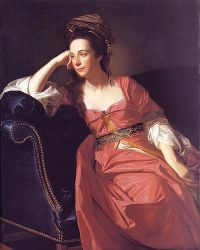
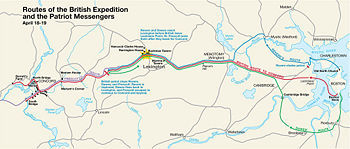
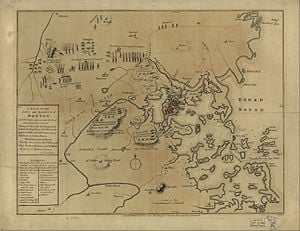
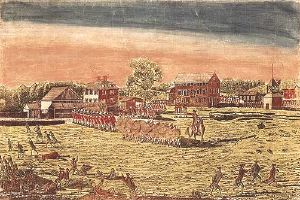
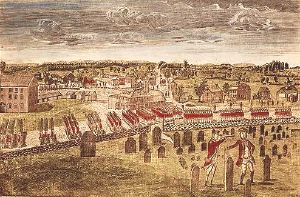
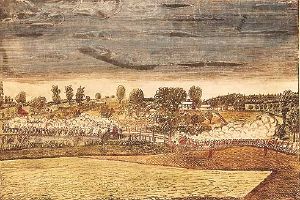
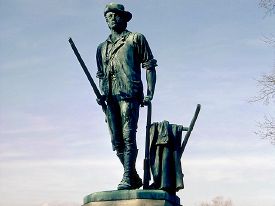
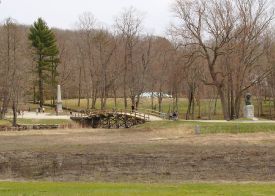
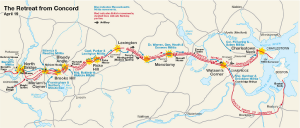
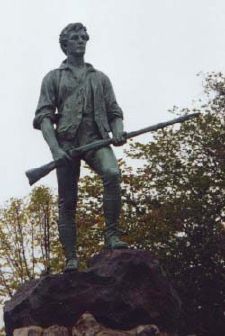
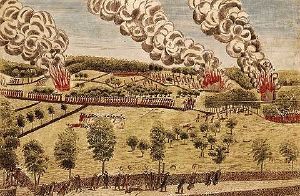
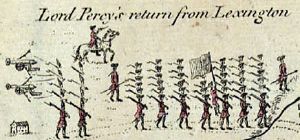
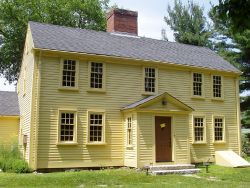
 KSF
KSF